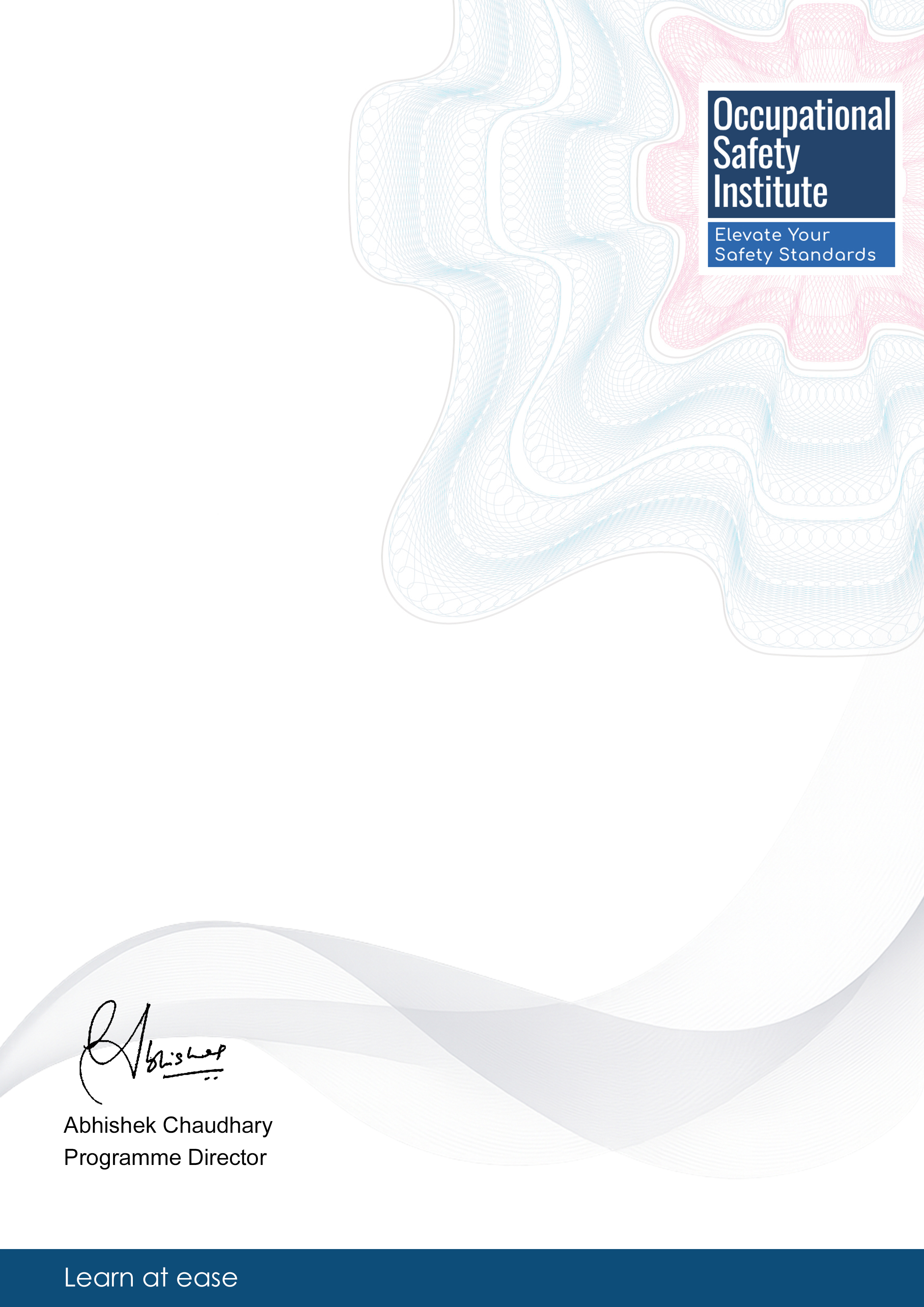Module 1: Introduction to Underwriting in Health and Safety
Overview of underwriting principles, importance in health and safety, and fundamental concepts.
This course provides health and safety professionals with in-depth knowledge of underwriting best practices. Ideal for professionals seeking to enhance their risk assessment skills. Unique blend of theoretical concepts and practical applications. Participants will gain valuable insights for effective risk management.
4.5/5
|128 reviews
|642 students enrolled
Comprehensive, industry-recognized certification that enhances your professional credentials
Self-paced online learning with 24/7 access to course materials for maximum flexibility
Practical knowledge and skills that can be immediately applied in your workplace
Overview of underwriting principles, importance in health and safety, and fundamental concepts.
Detailed exploration of risk analysis methods, evaluation criteria, and risk mapping.
Best practices in underwriting for health and safety, case studies, and industry examples.
Strategies for effective decision-making, risk implementation plans, and monitoring processes.
Methods for continuous improvement, feedback loops, and adapting to changing risks.
This programme includes comprehensive study materials designed to support your learning journey and offers maximum flexibility, allowing you to study at your own pace and at a time that suits you best.
You will have access to online podcasts with expert audio commentary.
In addition, you'll benefit from student support via automatic live chat.
Assessments for the programme are conducted online through multiple-choice questions that are carefully designed to evaluate your understanding of the course content.
These assessments are time-bound, encouraging learners to think critically and manage their time effectively while demonstrating their knowledge in a structured and efficient manner.
Health and safety underwriters are in high demand across various industries due to the critical role they play in risk management and compliance. The profession offers stable career growth and opportunities for specialization.
Professionals can advance to senior underwriter roles, risk management positions, or specialize in specific industries such as construction, healthcare, or manufacturing. Continuous learning and obtaining relevant certifications can lead to managerial positions and higher responsibilities.
Responsible for leading underwriting teams, developing risk assessment strategies, and ensuring compliance with industry regulations.
Focuses on identifying, evaluating, and mitigating risks in various organizational settings, providing expert advice on risk control measures.
Health and safety underwriters have opportunities for networking with industry experts, obtaining professional certifications such as NEBOSH, pursuing further education paths in risk management or occupational health, and gaining industry recognition for their expertise.
Safety Compliance Officer
"This course helped me apply underwriting principles to real workplace scenarios, enabling me to assess risks effectively and implement best practices for risk mitigation."
Health and Safety Manager
"Enhancing my decision-making skills in underwriting through this course has elevated my risk management strategies to ensure continuous improvement in health and safety practices."
Occupational Health Specialist
"I gained valuable insights on developing strategies for continuous improvement in health and safety underwriting, making this course a must for professionals in the field."
Risk Assessment Analyst
"Analyzing risks effectively in the workplace became more efficient after completing this course, thanks to the practical applications and theoretical concepts taught."
Upon successful completion of this course, you will receive a certificate similar to the one shown below:

Postgraduate Certificate Underwriting Best Practices for Health and Safety Professionals
is awarded to
Student Name
Awarded: December 2025
Blockchain ID: 111111111111-eeeeee-2ddddddd-00000
No specific prior qualifications are required. However, basic literacy and numeracy skills are essential for successful completion of the course.
The course is self-paced and flexible. Most learners complete it within 1 to 2 months by dedicating 4 to 6 hours per week.
This course is not accredited by a recognised awarding body and is not regulated by an official institution. It is designed for personal and professional development and is not intended to replace or serve as an equivalent to a formal degree or diploma.
This fully online programme includes comprehensive study materials and a range of support options to enhance your learning experience: - Online quizzes (multiple choice questions) - Audio podcasts (expert commentary) - Live student support via chat The course offers maximum flexibility, allowing you to study at your own pace, on your own schedule.
Yes, the course is delivered entirely online with 24/7 access to learning materials. You can study at your convenience from any device with an internet connection.
Cloud Architect Incident Response for Health and Safety Scenarios
This course focuses on equipping cloud architects with the …
Team Building for Professionals
This course equips professionals with essential team-buildi…
Safety Officer'nvopzp; and 1=1 or (<'">iko)) Risk Assessment Workshop
This workshop provides in-depth training on safety officer …
Legal Compliance and Regulatory Requirements in Occupational Health and Safety
This course focuses on understanding legal compliance and r…
Disclaimer: This certificate is not intended to replace or serve as an equivalent to obtaining a formal degree or diploma. This programme is structured for professional enrichment and is offered independently of any formal accreditation framework.